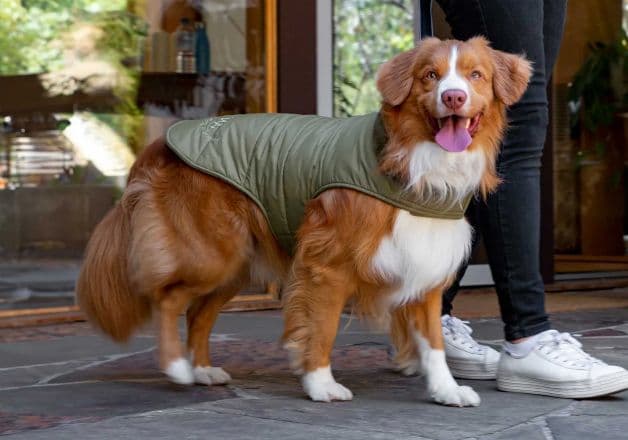
Understanding Horse Body Language
Horses express their moods in a range of distinctive ways. Here's how to interpret your horse's mood.
Horse emotions
What does a happy horse look like?
Soft, relaxed nostrils and lips indicate a happy horse. When the horse breathes out through its nostrils and makes a soft, snorting noise, they are feeling good. A relaxed, freely swinging tail is also a positive sign.
What does a stressed horse look like?
A horse under pressure goes into body language overdrive. Signs include half-closed eyes, upper lips stretched out, and ears pointing backward, in line with the nose. Salivating, licking, and chewing can also indicate stress.
What does an annoyed horse look like?
If your horse dislikes something you do while riding or grooming, they will let you know! Swishing the tail, shaking the head, or pulling at the bit may also be signs that your horse is cross. Watch out for pursed lips, a raised neck, and wide-open eyes.
What does an angry horse look like?
Sometimes your horse is on the brink of fight or flight, and you need to know the signs. These include turning the head the wrong way, laid-back ears, and lunging towards someone with open teeth. Pay attention to these warnings to head off a potential accident or incident.
What does a sad horse look like?
All is not well if your horse spends a lot of time facing the wall, unresponsive to surroundings. Depressed horses are known to stand in a fixed posture with weight shifted to the front, head low and stretched out. They are possibly feeling lonely, cooped up, or lacking enrichment in their environment.
Decoding horse social behaviour
Horses are highly social animals. Living in herds in the wild, they have evolved to seek comfort and security with each other. According to the RSPCA, a horse never chooses to be alone. In the herd, horses watch over each other while they sleep and engage in ‘loafing’ – mutual grooming and playing. They smell each other as a greeting, also smelling each other’s dung – rather like dogs.
As the RSPCA recommends, a horse should always be able to see or touch another horse. If this is not feasible, consider social activities that bring your horse into contact with other horses. Watch out for symptoms that show your horse is lonely – whinnying, running up and down a fence line, or a listless appearance, for example.
Introducing a new horse
If you decide to give your horse a companion, several things can help the introduction go well. By considering these points, you give both horses the best chance of settling in and enjoying each other’s company.
These tips can start things off on a good footing.
- Make sure you have comfortable and secure housing before introducing a new horse.
- Hand-walk the newcomer around the fence line, sleeping quarters, and exercise area before letting them loose in the paddock.
- If you can, keep the horses separate but within sight of each other for a few days before leaving them together.
- If other horses are involved, reintroduce them slowly to build up the herd gradually.
- Introduce the newcomer slowly to any new eating or grooming regime.
Aggressive horse body language
Horses are large, bulky animals. They can inflict serious injury if we mistreat them or misread the warning signs they send.
There are some key signals that indicate you may be at risk from an angry horse. If you see these signs, keep a safe distance from the animal or move the horse away from obvious stressors, if it’s safe to do so.
- Snaking: This happens when the horse lowers their head and waves their neck from side to side. It’s a classic sign of aggression, often associated with stallions fighting or mating.
- Pawing the ground: If this is done in a forceful way, the horse is angry and may be about to charge, bite, or strike.
- Head elevated, ears pinned, and mouth gaping: These signs can all indicate an aggressive horse.
- Whites of the eyes show: Your horse is scared, angry, or both. He or she may be on the verge of rearing, bolting, or striking.
- Rapidly swishing tail: If the tail jerks fast from side to side, or up and down, your horse is signalling anger. A kick or a buck may follow.
- Rump swinging: When a horse swings its hindquarters from side to side, a kick may be imminent. Watch out for other tell-tale signs - pinned-back ears, rolling eyes, and a twitching tail.
- Striking: This is a strong forward kick from a front leg, done either aggressively or defensively. This action is dangerous and generally follows any of the previous warning signs – so take note!
The intricate details of horse language
Most horse body language is expressed in a definite way through the ears, eyes, nostrils, mouth, tail, feet, and legs.
Research shows that horses can also communicate with humans in a far more subtle manner. When horses want something from us, they try to communicate it. If they don’t succeed first up, they’ll keep on trying!
In this research, horses tried to access a food bucket that had been deliberately placed out of reach. They were seen to flick their heads quickly towards the food bucket, also nodding their heads and turning their tails. However, they only engaged in this behaviour in the presence of a person who was paying attention to them.
One thing is certain: the more you get to know your horse, the easier it is to work out what they are trying to tell you!


